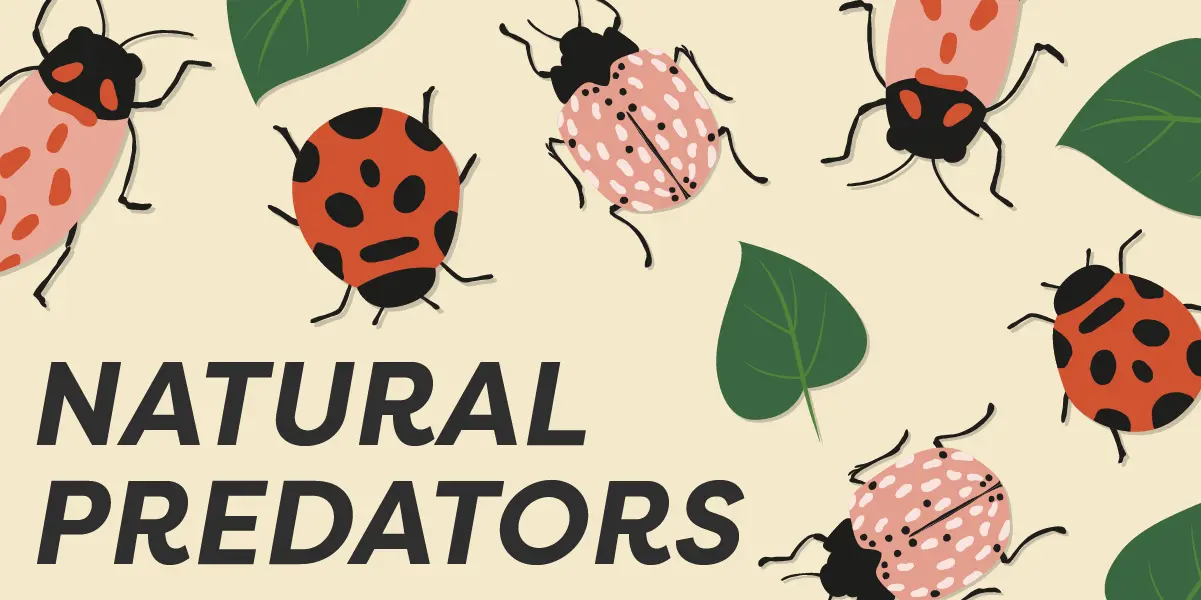Your once-gorgeous strawberries are half-eaten before the harvest. Your once-luscious lettuce has more holes than a pegboard, and the brownish tinge of decay has crept up on your tomato plants. What gives?
In your battle against garden pests, the pests are winning. It’s not even a contest.
So, what should an eco-conscious gardener do? Spray the insect invaders into oblivion?
Pesticides have well-publicized downsides. They harm the environment, kill beneficial insects along with the bad, and pose a health risk to humans and pets.
But just as nature produces insect pests that can wreck your garden, it offers the means to keep them in check. By attracting natural predators and encouraging them to stay, you can reinvigorate your garden ecosystem so that pests never gain the upper hand — or claw.
The Role of Natural Predators
Natural predators, like ladybugs, lacewings, and praying mantises, feed on insects that damage plants. These compact hunter-killers have evolved alongside their prey to become the Terminators of the insect world.
For example, ladybugs use their specialized mouthparts to suck out the juices of aphids, mealybugs, and other soft-bodied insects (ew!). Praying mantises rely on their large front legs to capture tasty caterpillars and grasshoppers.
Common Garden Predators
Here’s a list of predatory critters you might want to invite to your next garden party.
- Ladybugs feast on aphids and other soft-bodied insects.
- Lacewings: Their larvae are voracious predators of pests like aphids, caterpillars, and whiteflies.
- Hoverflies pollinate your plants while their larvae munch on pests.
- Birds feed on insects, slugs, and snails.
- Frogs and toads enjoy a diet of beetles, slugs, and other garden pests.
- Spiders help control a wide range of insect populations.
- Predatory beetles target slugs, snails, and other insects.
- Parasitic wasps lay their eggs inside the bodies of caterpillars, aphids, and other pests. The developing larvae consume their hosts from the inside out.
- Dragonflies prey on mosquitoes, aphids, and other flying insects. These are the SR-71s of phylum Arthropoda!
- Nematodes are microscopic worms that target soil-dwelling pests, including root-feeding larvae and grubs.
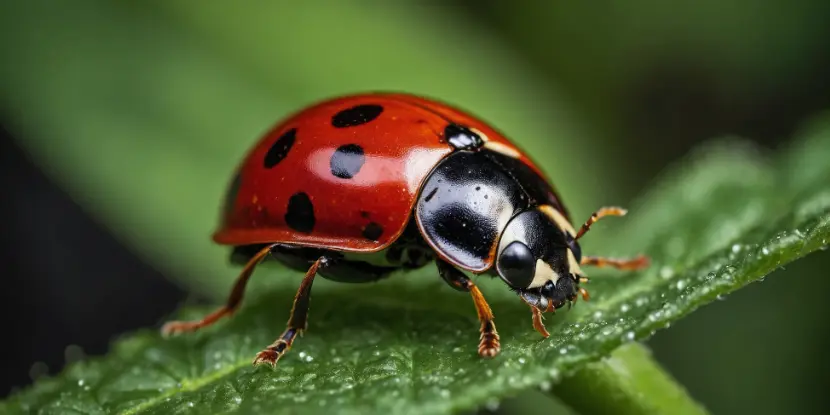
The adorable ladybug is one of nature’s great hunter-killers.
Creating a Predator-Friendly Garden
Plant Diversity
Start by diversifying your plant selection for food, shelter, and breeding.
- Flowering plants like marigolds, daisies, and yarrow attract predatory insects by providing nectar and pollen.
- Herbs: Mint, fennel, and dill are insect attractors par excellence.
- Native plants support a wide range of local predators. They’re also drought-resistant and easy to maintain.
- Ground covers like clover and thyme provide ground-level habitats for beetles and spiders.
- Trees and shrubs provide shelter and food for predatory birds and beneficial insects. Species like elderberry, wild cherry, and hawthorn are particularly effective.
- Ornamental grasses are a haven for predatory insects like spiders and ground beetles.
- Climbing vines like honeysuckle and
- A Comprehensive Guide to Clematis Care create a vertical habitat, encouraging birds and beneficial insects.
Shelter
Beyond the shelter of plants, consider incorporating the following elements in your garden.
- Mulch offers a hiding spot for beetles and spiders.
- Logs, dead wood, and rocks create a habitat for frogs, toads, wasps, and beetles.
- Birdhouses and feeders give birds a nesting spot and additional food sources to encourage them to stick around.
- Insect Hotels: These structures provide a haven for predatory insects like solitary bees, ladybugs, and lacewings.
- Compost piles attract beetles and ants, which prey on pest insects.
- Leaf litter is home to ground beetles, spiders, and other beneficial insects.
- Hedges act as windbreaks, nesting sites, and shelter for birds and larger predatory insects.
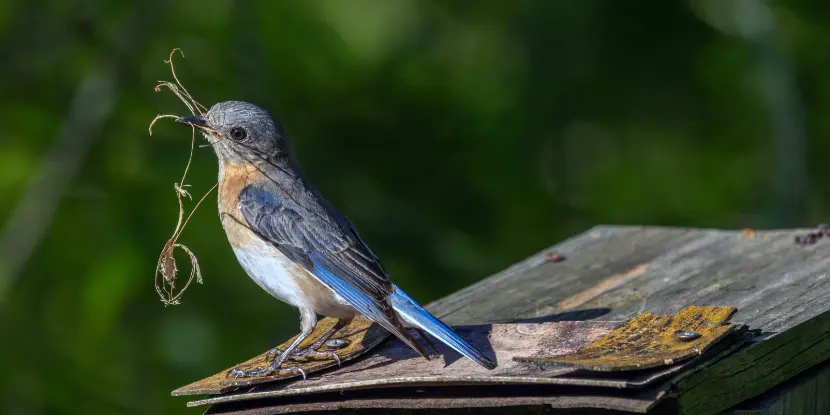
If you’d like to attract more predatory birds, give them a place to live.
Water Sources
Even a small water feature can attract a chorus of beneficial creatures.
- Birdbaths will draw birds and other small animals to your garden.
- Frogs and toads will appreciate a small pond or water feature.
- Ponds and shallow dishes filled with water can attract frogs, toads, birds, and beneficial insects. Ensure shallow access for small creatures and fresh water to prevent mosquitoes from breeding.
- Drip irrigation systems provide a steady source of moisture and can attract ground-dwelling predators like beetles and spiders, which prefer damp environments.
- Rain gardens capture and filter runoff, creating a moist habitat that supports a variety of beneficial insects and amphibians.
- Bubbling rocks and small fountains add movement to the water, making it more attractive to birds while preventing stagnation.
- Water-absorbing crystals in plant containers provide a micro-habitat for predatory insects that thrive in humid conditions.
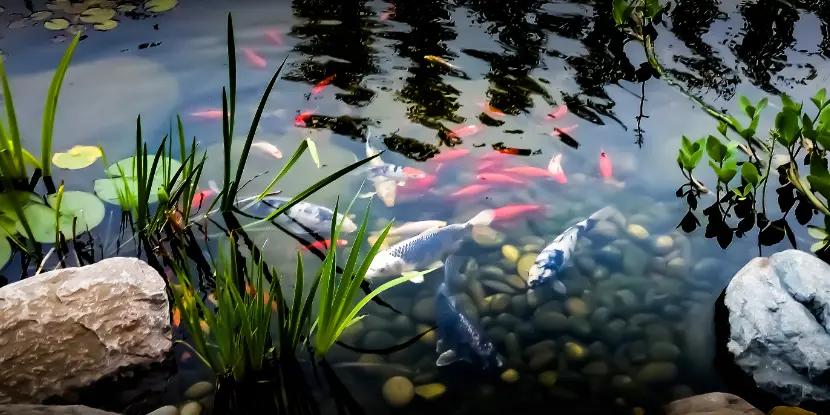
Despite their zen-like charms, small ponds are a major attraction for predatory birds and insects.
Natural Pest Control Strategies
Avoid Pesticides
Pesticides don’t discriminate between pests and beneficial insects. Eliminate or reduce pesticide use to make your garden more hospitable for natural predators.
Companion Planting
Certain plants work together to repel pests and attract beneficial insects. Popular combinations include:
- Tomatoes and Basil: Basil repels tomato hornworms and attracts predatory insects.
- Cabbage and Dill: Dill attracts predatory wasps that target cabbage worms.
- Beans and Marigolds: Marigolds discourage various pests, making them excellent companions for beans, among other plants.
- Radishes and Chervil: Radishes ward off flea beetles, while chervil attracts beneficial insects like hoverflies.
- Carrots and Sage: Sage acts as a natural deterrent for carrot flies. Both plants attract beneficial pollinators.

The powerhouse kitchen combination of tomato and basil is also a powerhouse garden combination.
Trap Crops
Some plants are more appealing to pests than others. By planting trap crops in your garden, you can lure pests away from plants that need more protection.
- Nasturtiums attract aphids, making them ideal decoys for other plants in your garden.
- Rhubarb is irresistible to slugs. If you’re dealing with a slug problem, plant rhubarb around your garden to trap these slimy pests.
- Dill is a magnet for tomato hornworms. Plant it near your tomatoes or peppers to lure these pests away from your crops.
- Mustard is particularly effective at attracting aphids, making it another excellent choice for safeguarding your main crops.
- Sunflowers can draw aphids away from more delicate plants while providing a vertical refuge for predatory insects.
- Blue Hubbard Squash lures squash bugs and cucumber beetles, protecting more vulnerable plants like cucumbers and melons.
- Collard greens can help control diamondback moths and cabbage worms, pulling them away from other brassicas.
- Radishes protect cruciferous vegetables from flea beetles and root maggots.
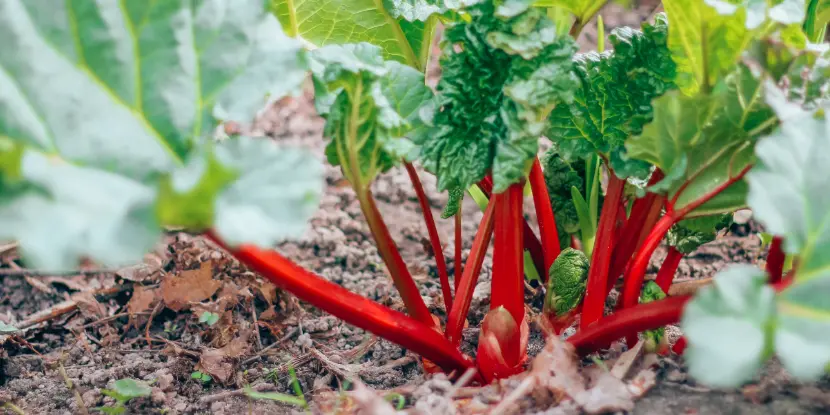
Rhubarb is irresistible to slugs. It makes an equally irresistible pie.
Crop Rotation
Rotating crops each season can disrupt pests’ breeding cycles and limit their access to food sources. It also improves soil health and nutrient balance, leading to healthier plants that can better resist pests.
Natural Pesticides
If you resort to pesticides, opt for natural alternatives like neem oil or diatomaceous earth. These products target specific pests and are less harmful to beneficial insects.
FAQs: Attracting Natural Predators to Your Garden
Q: How long does it take to see results when attracting natural predators?
Significant results can take a few weeks to a few months to see. Be patient and consistent with your efforts.
Q: Can I attract natural predators to a small garden?
Even small gardens can support a variety of natural predators. Focus on creating a diverse environment with plenty of shelter and food sources.
Q: What if I still have pest problems?
If pests persist, consider introducing additional predators or using targeted, organic pest control methods. Sometimes, you’ll need to combine strategies for the best results.
Q: Will natural predators harm my plants?
Natural predators typically target pests and not your plants. However, some predators might cause minor damage in their hunt for food, but this is usually negligible compared to pest damage.
Q: How do I know if I’ve attracted natural predators?
Look for signs like increased bird activity, sightings of beneficial insects, and decreased pest damage on plants. You may also notice increased pollinator activity as more flowers bloom in response to improved plant health.
Q: Can I use chemical fertilizers along with natural pest control methods?
Chemical fertilizers can disrupt the balance of your garden ecosystem, making it less inviting to natural predators. Opt for organic fertilizers and compost to provide nutrients to your plants while keeping the environment friendly for beneficial insects and animals.
Q: How do I maintain a water feature to ensure it stays beneficial?
Clean birdbaths, ponds, and fountains frequently to remove debris and prevent algae buildup. Ensure the water remains fresh, and check for mosquito larvae, especially during warmer months. Installing a small pump or adding fish can avoid stagnation and mosquito breeding.
Q: Are there specific plants that attract more beneficial insects?
Certain plants are pest control superstars. Marigolds, lavender, yarrow, and sunflowers are excellent choices, and herbs like mint, dill, and fennel are irresistible draws for natural predators.

